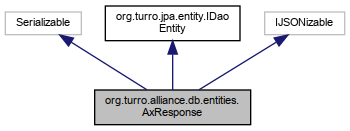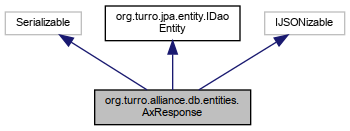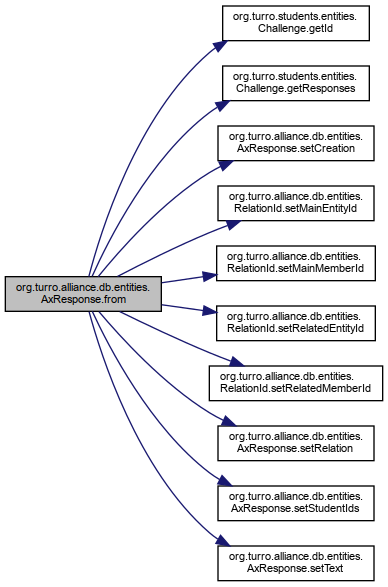- Author
- Lluis Turró Cutiller lluis.nosp@m.@tur.nosp@m.ro.or.nosp@m.g
Definition at line 44 of file AxResponse.java.
◆ entityId()
| Object org.turro.alliance.db.entities.AxResponse.entityId |
( |
| ) |
|
◆ equals()
| boolean org.turro.alliance.db.entities.AxResponse.equals |
( |
Object |
obj | ) |
|
Definition at line 146 of file AxResponse.java.
153 if (getClass() != obj.getClass()) {
156 final AxResponse other = (AxResponse) obj;
157 return Objects.equals(this.relation, other.relation);
◆ from()
| static Set<AxResponse> org.turro.alliance.db.entities.AxResponse.from |
( |
long |
memberId, |
|
|
Challenge |
challenge |
|
) |
| |
|
static |
Definition at line 92 of file AxResponse.java.
93 Set<AxResponse> responses =
new HashSet<>();
94 challenge.getResponses().forEach(response -> {
95 RelationId relation =
new RelationId();
96 relation.setMainEntityId(Long.toString(challenge.getId()));
97 relation.setMainMemberId(memberId);
98 relation.setRelatedEntityId(response.getId());
99 relation.setRelatedMemberId(memberId);
100 AxResponse responder =
new AxResponse();
101 responder.setRelation(relation);
102 responder.setCreation(response.getCreation());
103 responder.setStudentIds(response.getStudentIds());
104 responder.setText(response.getText());
105 responses.add(responder);
◆ fromJson()
| static AxResponse org.turro.alliance.db.entities.AxResponse.fromJson |
( |
JsonValue |
value | ) |
|
|
static |
Definition at line 134 of file AxResponse.java.
135 return IJSONizable.fromJson(value.toString(), AxResponse.class);
◆ getCreation()
| Date org.turro.alliance.db.entities.AxResponse.getCreation |
( |
| ) |
|
◆ getRelation()
| RelationId org.turro.alliance.db.entities.AxResponse.getRelation |
( |
| ) |
|
◆ getStudentIds()
| Set<String> org.turro.alliance.db.entities.AxResponse.getStudentIds |
( |
| ) |
|
◆ getText()
| String org.turro.alliance.db.entities.AxResponse.getText |
( |
| ) |
|
◆ hashCode()
| int org.turro.alliance.db.entities.AxResponse.hashCode |
( |
| ) |
|
Definition at line 139 of file AxResponse.java.
141 hash = 11 * hash + Objects.hashCode(this.relation);
◆ isEmpty()
| boolean org.turro.alliance.db.entities.AxResponse.isEmpty |
( |
| ) |
|
◆ setCreation()
| void org.turro.alliance.db.entities.AxResponse.setCreation |
( |
Date |
creation | ) |
|
◆ setRelation()
| void org.turro.alliance.db.entities.AxResponse.setRelation |
( |
RelationId |
relation | ) |
|
◆ setStudentIds()
| void org.turro.alliance.db.entities.AxResponse.setStudentIds |
( |
Set< String > |
studentIds | ) |
|
◆ setText()
| void org.turro.alliance.db.entities.AxResponse.setText |
( |
String |
text | ) |
|
◆ toJson() [1/2]
| String org.turro.alliance.db.entities.AxResponse.toJson |
( |
| ) |
|
◆ toJson() [2/2]
| String org.turro.alliance.db.entities.AxResponse.toJson |
( |
Map< String, Object > |
properties | ) |
|
The documentation for this class was generated from the following file:


 Public Member Functions inherited from org.turro.jpa.entity.IDaoEntity
Public Member Functions inherited from org.turro.jpa.entity.IDaoEntity




